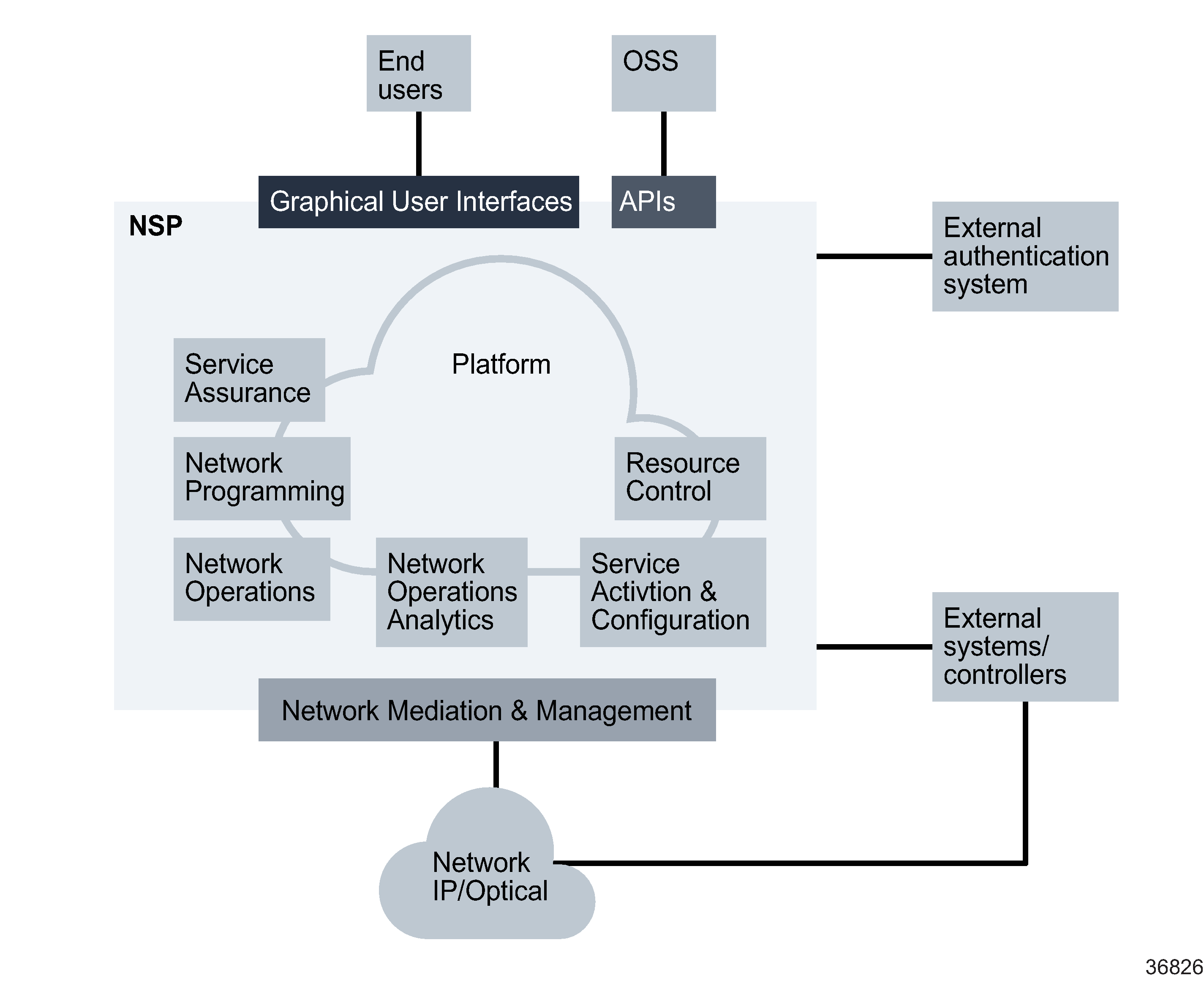System design
Development methodology
The NSP architecture incorporates design considerations that include:
-
open standards that promote interworking and integration with in-house or third-party systems; see Appendix A, NSP technology standards for information
-
deployment agility for adaptation to changing network scope or complexity
-
programmability for dynamic management of network operations
-
IPv4 and IPv6 support on internal, external, and mediation interfaces
-
cloud-native distributed processing for efficiency and horizontal scalability
-
fault-tolerance safeguards that include local and geographic redundancy
Core system elements
The various components of the modular NSP architecture work together as a customized management solution designed to meet your current and changing network or business requirements. Components and functions can be readily added, updated, or removed, as required.
Depending on the installation options that you choose, ancillary components in an NSP system may provide the following:
The NSP is designed to interface or integrate with external systems such as the following:
The following figure shows an abstract representation of the NSP services and interfaces.
